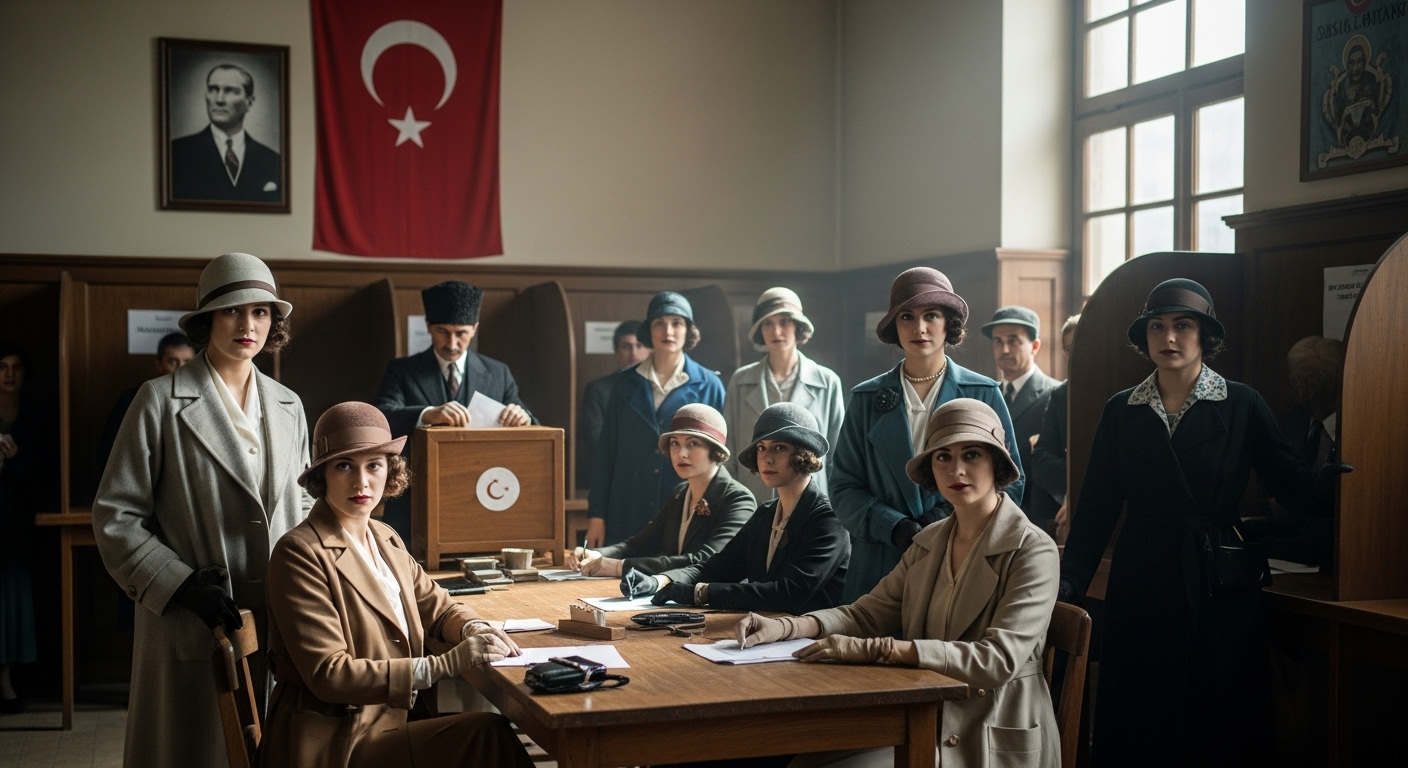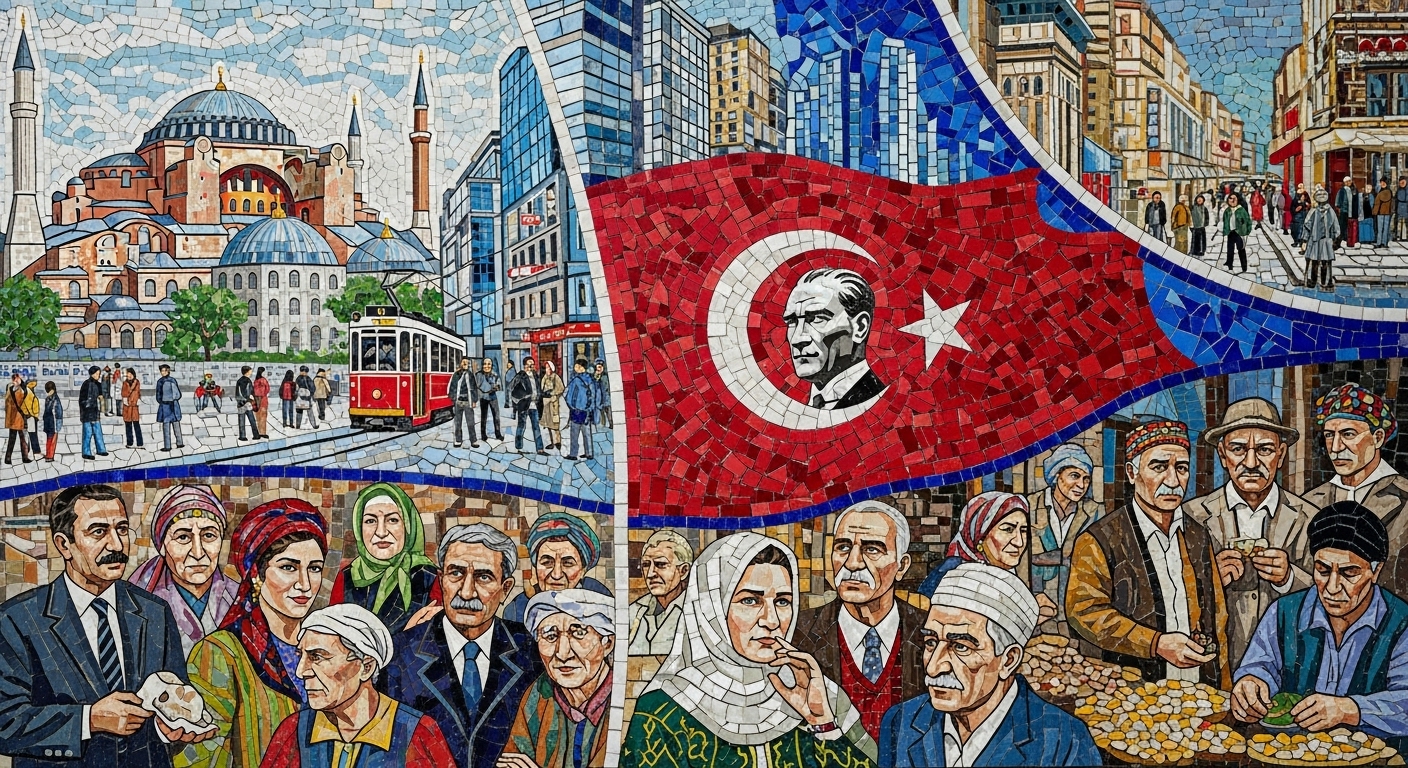Turkey, a nation uniquely positioned at the crossroads of East and West, bears the indelible mark of one visionary leader: Mustafa Kemal Atatürk. His radical reforms transformed a crumbling empire into a vibrant, modern republic, fundamentally reshaping every facet of Turkish society.
Born in 1881, Mustafa Kemal Atatürk emerged as a brilliant military commander during the collapse of the Ottoman Empire. He led the Turkish War of Independence (1919-1922) and subsequently founded the Republic of Turkey in 1923, serving as its first president until his death in 1938. His leadership was not merely about establishing a new state, but about forging an entirely new national identity.
This article will explore the comprehensive and revolutionary reforms initiated by Atatürk, examining their immediate effects and long-term impact on Turkish society, politics, culture, and economy, which continue to shape the nation today.
Historical Context: The Birth of a Nation
The once-mighty Ottoman Empire, spanning centuries and continents, found itself in severe decline by the early 20th century. Riddled with internal strife and external pressures, it was often dubbed the “Sick Man of Europe.” Its eventual entry into World War I on the side of the Central Powers proved catastrophic, leading to its defeat and the subsequent occupation of Anatolia by Allied forces.
It was amidst this despair that Mustafa Kemal, then a decorated Ottoman officer, rose to prominence. His strategic genius and unwavering resolve galvanized the Turkish people, leading the fierce Turkish War of Independence against the occupying powers. This monumental struggle culminated in victory, paving the way for the dissolution of the Ottoman Sultanate in 1922 and the official declaration of the Republic of Turkey on October 29, 1923[1]. The Caliphate, the spiritual leadership of Islam, followed suit, abolished in 1924.
The Pillars of Change: Key Reforms Introduced by Atatürk
A. Political Reforms: Founding a Secular Republic
Atatürk’s political vision was clear: to transform Turkey into a modern, secular, and democratic republic. The abolition of the Sultanate in 1922 marked the definitive end of imperial rule, replacing centuries of dynastic authority with the sovereignty of the nation. This was swiftly followed by the abolition of the Caliphate in 1924, a profoundly symbolic act that severed the ties between state and religion, signaling Turkey’s commitment to secular governance[2]. A new Constitution laid the groundwork for a democratic, parliamentary system, establishing the principle of laicism (laïcité), or secularism, as a cornerstone of the Turkish state – a concept that ensures the state’s neutrality towards religious beliefs.
B. Legal and Judicial Reforms: Modernizing the Rule of Law
To underpin the new secular state, Atatürk embarked on comprehensive legal reforms. The Sharia Courts, which had administered religious law for centuries, were abolished in 1924 and replaced by a unified, secular judicial system. In 1926, Turkey adopted European legal codes, including the Swiss Civil Code, the Italian Penal Code, and the German Commercial Code, profoundly overhauling its legal framework. These reforms had a particularly transformative impact on women’s rights, granting them equal rights in marriage, divorce, and inheritance, and paving the way for their full political participation, including suffrage, in the 1930s[3].
C. Educational and Cultural Reforms: Forging a National Identity
Atatürk believed that a modern nation required a modern education system. The Law on the Unification of Education (Tevhid-i Tedrisat Kanunu) in 1924 centralized and secularized all educational institutions, shutting down traditional madrasas (religious schools) in favor of a curriculum based on modern science and reason. Perhaps the most striking cultural reform was the adoption of the Latin Alphabet in 1928, replacing the Arabic script previously used for Turkish. This radical change aimed to boost literacy and align Turkey more closely with Western cultures, making education more accessible to the populace. Concurrent language reforms sought to purify the Turkish language, removing many Arabic and Persian loanwords to foster a distinct national linguistic identity. To further this, the Turkish Historical Society and the Turkish Language Association were established to promote a national narrative and linguistic research.
D. Social Reforms: Redefining Public Life
Beyond legal and educational systems, Atatürk sought to reshape the very fabric of daily life. The Dress Code Reforms of 1925 famously banned the fez, a traditional Ottoman hat, promoting Western-style hats and attire for men. This was a symbolic gesture to break with the Ottoman past and embrace a modern, European identity. The Surname Law of 1934 mandated that all Turkish citizens adopt hereditary surnames, a practice previously uncommon in Turkey, further integrating individuals into a structured national society. It was during this period that the Grand National Assembly bestowed upon Mustafa Kemal the surname “Atatürk,” meaning ‘Father of Turks.’ Other reforms included the adoption of the Gregorian Calendar and International Time in 1925-1926, aligning Turkey with global standards, and the introduction of the metric system.
E. Economic Reforms: State-Led Development
Economically, Atatürk adopted a policy of Étatism (Statism), characterized by significant state intervention and control, particularly in industrial development. Recognizing the need for rapid modernization and national self-sufficiency after decades of foreign economic exploitation, the state played a direct role in establishing industries, banks, and infrastructure. This approach aimed at agricultural development and the nationalization of key industries and resources, steering Turkey towards economic independence and growth. While controversial among proponents of free markets, Étatism laid the foundation for Turkey’s industrial base in its formative years[4].
Immediate and Short-Term Impacts
The immediate impacts of Atatürk’s reforms were nothing short of revolutionary. Turkey experienced rapid modernization and Westernization, shifting dramatically from an Ottoman-Islamic societal structure to a secular, European-oriented state. These changes fostered the emergence of a strong national identity, unifying diverse populations under a common Turkish banner, distinct from the multi-ethnic and multi-religious identity of the former empire. The secularization of public life dramatically reduced the influence of religious institutions in governance, education, and law. The alphabet reform, while initially challenging, led to a significant increase in literacy rates over time. However, such sweeping changes were not without their difficulties. There was considerable challenges and resistance from traditionalists and religious conservatives who viewed these reforms as an assault on their cultural and religious values, leading to internal tensions that would echo for decades.
Long-Term Legacy and Contemporary Relevance
Atatürk’s reforms established the foundational principles of modern Turkey, often encapsulated as Kemalism. These principles – Republicanism, Nationalism, Populism, Étatism, Secularism, and Revolutionism (or Reformism) – continue to serve as the ideological bedrock of the Turkish state. Yet, the nation constantly navigates the complex interplay of these tenets. The continued political and social debates surrounding secularism versus religious conservatism remain a defining feature of Turkish politics, illustrating the enduring tension between different visions for the country’s future. Atatürk’s model of authoritarian modernization also served as an influence on regional modernization efforts, inspiring other Muslim-majority nations seeking to break from traditional structures. However, his legacy is not without its challenges. Recent political shifts in Turkey have seen efforts to reinterpret or even diminish aspects of his reforms, particularly those concerning secularism, reflecting a societal re-evaluation. Despite these challenges, Atatürk commands enduring admiration and criticism both inside and outside Turkey, celebrated by many as the architect of a modern nation and criticized by others for his authoritarian methods and the suppression of dissenting views.
Conclusion
Mustafa Kemal Atatürk’s reforms were a monumental undertaking, fundamentally transforming Turkey from the remnants of an empire into a forward-looking republic. From political and legal restructuring to educational, social, and economic overhauls, the breadth and depth of his vision profoundly reshaped the nation. His legacy is a complex tapestry: hailed as the architect of modern Turkey, a national hero who brought enlightenment and progress, he is also acknowledged for the authoritarian nature of some of his modernization efforts.
Ultimately, Atatürk’s vision created a modern nation-state whose identity remains inextricably linked to his reforms. Modern Turkey continues to grapple with and navigate the principles he laid down, constantly balancing tradition with modernity, and secularism with religious identity in a rapidly changing world. His impact is not merely historical; it is a living, breathing force that continues to shape the debates and direction of the Turkish Republic today.







